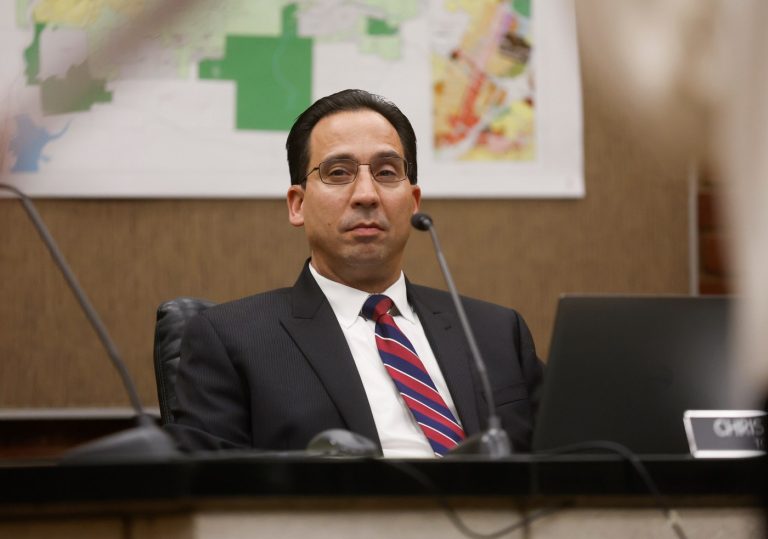Oregon’s athletic department booked $150 million in revenue last year, according to a financial statement submitted to the NCAA.
So did Washington.
The Ducks reported an operating surplus.
So did the Huskies.
Oregon’s football program generated more than $35 million in profit.
So did Washington’s.
But that’s where the relevant fiscal similarities end as the schools prepare to stroll into the Big Ten next fall.
Actually, hold on. The bitter rivals have one more thing in common: Both will enter their new home at a financial disadvantage, as half-share members of the nation’s richest conference.
And based on the details revealed in their financial statements for the 2023 fiscal year, the Ducks appear better positioned than the Huskies to navigate a challenging existence and muster the resources needed.
With 50 percent shares of the Big Ten’s media rights distributions for the next six years, the Pacific Northwest powers will receive approximately $180 million less than the other 16 schools over the contract term.
Any cracks in the fiscal foundation, in either Eugene or Seattle, could make the transition exponentially more daunting, especially in the immensely competitive world of Big Ten football.
The Ducks are entering the conference with a budget that’s as close to airtight as possible.
The Huskies aren’t quite there.
What’s the difference?
Let’s dive in.
The Huskies reported $151.6 million in revenue last year with a $1.6 million operating surplus, according to their filings to the NCAA.
But they received $10.3 million in direct university support, in the form of transfers from central campus that were booked as revenue (per NCAA guidelines).
Remove that campus support, and Washington’s surplus turns into an $8.7 million shortfall.
Meanwhile, Oregon reported $150.6 million in revenue and an operating surplus of $3.8 million, all while receiving no transfers from campus.
The Ducks are entirely self-sufficient, a notable exception in the highly-subsidized Pac-12, where the average amount of university support for athletics was $13.7 million last year.
Campus subsidies for athletics via student fees and direct transfers:
Oregon: $0
UCLA: $2.1 million
Washington State: $6.8 million
Washington: $10.3 million
Oregon State: $10.7
Arizona: $12.2 million (excludes $31.6 million loan)
Stanford: $12.3 million
Utah: $16.3 million
Arizona State: $16.6 million
Colorado: $29.4 million
Cal: $33.8 million
(USC’s data was unavailable.)
The Ducks have operated without campus help every year since 2016, when it received $1.8 million in student fees.
Asked to explain the self-funded existence, Jimmy Stanton, the senior associate athletic director for communications, noted via email:
“We are in a unique group in college athletics in terms of being self-sustaining, which is becoming more and more challenging based on the dynamics of the industry.
“Oregon athletics is self-sustaining because of a variety of factors – strong fan interest and attendance … generous support from donors, conference revenues, sponsorship and licensing revenues, and a commitment to strong financial management and consistently operating an efficient department.”
It helps to have Phil Knight, but the Nike founder isn’t the only reason for Oregon’s self-sufficiency.
And it helps to have a former accountant as your athletic director, but Rob Mullens’ background is not the sole reason for the Ducks’ fiscal success.
Their operation leaned heavily on four revenue buckets in the 2022-23 academic year. One was external: Approximately $35 million in distributions from the Pac-12 and NCAA.
The other three revenue buckets were generated organically by the athletic department:
— Ticket sales: $24.3 million
— Contributions (donations): $40.4 million
— Royalties, licensing and sponsorship: $26.5 million.
Related Articles
Utah athletics shatters its revenue record in another profitable year
Washington attempts to restructure stadium debt ahead of Big Ten move
Arizona needed $31.6 million loan in FY23, in similar budget shape as ASU
Dan Hurley was right: ASU doesn’t support MBB, per financial docs
Pac-12 schools bled cash in FY23, relied heavily on campus support
The total generated in those areas ($91.2 million) accounted for 61 percent of Oregon’s overall athletic revenue, providing the fuel for a self-funded department.
(Those same buckets accounted for 57 percent of Washington’s total revenue.)
Oregon’s strong organic revenue base — the football program has already sold out its allotment of season tickets for 2024, thanks partly to a date with Ohio State — should provide a foundation for success in the Big Ten.
Competing with Michigan and Ohio State would be tough enough on equal fiscal footing.
But for the two half-share members in the Pacific Northwest, the path is treacherous.
Oregon’s plan to counteract the revenue disparity, according to Stanton:
“We will continue to maximize every revenue stream and allocate resources strategically.”
The approach has worked well over time. But a next-level challenge awaits.
*** Send suggestions, comments and tips (confidentiality guaranteed) to pac12hotline@bayareanewsgroup.com or call 408-920-5716
*** Follow me on Twitter/X: @WilnerHotline
*** Pac-12 Hotline is not endorsed or sponsored by the Pac-12 Conference, and the views expressed herein do not necessarily reflect the views of the Conference.












